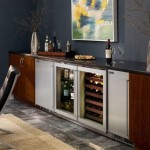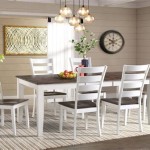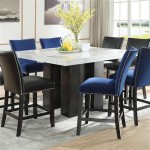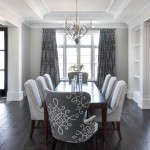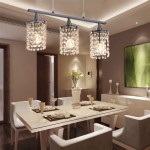Gray Dining Room Paint Colors: A Comprehensive Guide
Gray has solidified its position as a versatile and timeless color choice in interior design. Its inherent neutrality allows it to seamlessly integrate into various styles, from modern minimalist to traditional elegance. In the context of dining rooms, gray offers a sophisticated backdrop that enhances both the ambiance and the aesthetic appeal of the space. The spectrum of gray is vast, ranging from cool, almost silver tones to warm, earthy shades. Selecting the right gray paint color for a dining room requires careful consideration of factors such as natural light, existing furnishings, and the desired overall atmosphere.
The appeal of gray in dining rooms lies in its ability to create a sense of calm and refinement. Unlike bolder colors that can be visually overwhelming, gray provides a subdued foundation that allows other elements in the room, such as artwork, furniture, and textiles, to take center stage. It is a color that promotes relaxation and encourages conversation, making it an ideal choice for a space dedicated to shared meals and gatherings. Furthermore, gray is incredibly adaptable, pairing well with a wide range of colors, from vibrant jewel tones to soft pastels. This adaptability allows homeowners to easily update their dining room decor without needing to repaint the entire space.
The implementation of gray in a dining room can dramatically alter the perception of the space. A light gray can brighten a small or dimly lit room, creating an illusion of more space. Conversely, a darker gray can add depth and drama to a larger dining room, creating a more intimate and cozy atmosphere. The choice of gray can also influence the perceived formality of the room, with lighter shades often associated with a more casual and relaxed setting, while darker shades tend to be associated with a more formal and sophisticated setting.
Understanding Gray Undertones
One of the most crucial aspects of selecting the right gray paint color is understanding its undertones. Gray is rarely a pure, neutral color; it almost always has subtle undertones of other colors, such as blue, green, purple, or beige. These undertones can significantly impact how the gray appears in a room, particularly under different lighting conditions. Identifying the undertone is essential to ensuring that the gray complements the existing furnishings and decor.
Cool grays, which have undertones of blue, green, or purple, tend to create a more contemporary and sophisticated look. They work well in spaces with abundant natural light and can help to create a refreshing and airy atmosphere. These grays often pair well with cool-toned metals like silver and stainless steel, as well as with furniture in shades of white, black, and other cool colors. However, in a room with limited natural light, cool grays can sometimes appear cold and unwelcoming, so careful consideration should be given to the lighting plan.
Warm grays, which have undertones of beige, brown, or yellow, create a cozier and more inviting atmosphere. They are particularly well-suited for dining rooms that receive less natural light, as they can help to warm up the space and create a sense of comfort. Warm grays pair well with natural materials like wood and leather, as well as with warm-toned metals like gold and brass. They also complement furniture in earth tones, such as browns, creams, and greens. It is important to note that warm grays can sometimes appear muddy or yellowish in certain lighting conditions, so it is crucial to test the paint color in the room before committing to it.
To accurately identify the undertone of a gray paint color, it is recommended to compare it to a pure white swatch. This will help to highlight any subtle hints of color that may be present. It is also beneficial to test the paint color in the room at different times of day and under different lighting conditions. Natural light, artificial light, and even the color of the surrounding walls can influence how the gray appears.
Factors Influencing Gray Paint Color Selection
Several factors should be taken into account when selecting a gray paint color for a dining room. These factors include the amount of natural light, the size of the room, the existing furnishings, and the desired overall atmosphere. Carefully considering these factors will help to ensure that the chosen gray paint color creates a harmonious and visually appealing space.
Natural light plays a significant role in how a gray paint color appears. In a room with abundant natural light, almost any shade of gray can work well. However, in a room with limited natural light, it is generally best to opt for a lighter gray or a warm gray with yellow undertones to brighten the space. Darker grays can make a dimly lit room feel even smaller and more closed off.
The size of the dining room is another important consideration. In a small dining room, lighter grays can help to create an illusion of more space. These shades reflect light and make the room feel more open and airy. In a larger dining room, darker grays can be used to create a more intimate and cozy atmosphere. These shades absorb light and make the room feel more grounded and inviting.
The existing furnishings in the dining room should also be taken into account when selecting a gray paint color. The gray should complement the colors and styles of the furniture, artwork, and other decor items. For example, if the dining room furniture is primarily white or light-colored, a cool gray can create a sophisticated and contemporary look. If the furniture is primarily wood or leather, a warm gray can create a more traditional and inviting atmosphere.
The desired overall atmosphere of the dining room is perhaps the most important factor to consider. Do you want the dining room to feel formal and elegant, or casual and relaxed? Do you want it to feel bright and airy, or cozy and intimate? The chosen gray paint color should reflect the desired atmosphere. Lighter grays tend to create a more casual and relaxed atmosphere, while darker grays tend to create a more formal and elegant atmosphere. Cool grays tend to create a more contemporary atmosphere, while warm grays tend to create a more traditional atmosphere.
Popular Gray Paint Colors for Dining Rooms
The market offers a plethora of gray paint colors, each with its unique characteristics and undertones. Some popular options consistently garner attention for their versatility and aesthetic appeal. Exploring these options can serve as a starting point for identifying the perfect gray for a dining room project.
One consistently popular choice is Benjamin Moore's "Revere Pewter." This is a warm gray with subtle beige undertones, making it an incredibly versatile option that works well in a variety of dining room styles. It is particularly well-suited for spaces with warm-toned furniture and natural wood accents, creating a welcoming and comfortable atmosphere.
Another frequently considered selection is Sherwin-Williams' "Agreeable Gray." This is another warm gray that leans slightly more towards beige than "Revere Pewter," making it a great choice for dining rooms that need a touch of warmth. It is a neutral and inviting color that pairs well with a wide range of other colors, making it easy to coordinate with existing decor.
For those seeking a cooler gray, Benjamin Moore's "Gray Owl" is a worthwhile option. This is a light and airy gray with subtle green undertones, creating a refreshing and sophisticated look. It is particularly well-suited for dining rooms with abundant natural light and pairs well with cool-toned metals and white or black furniture.
Sherwin-Williams' "Repose Gray" is another popular cool gray selection. It offers a balanced, versatile tone that adapts well to different lighting conditions. It’s a sophisticated option that works nicely in modern and transitional dining spaces that benefit from a touch of cool neutrality.
For a more dramatic and sophisticated look, Benjamin Moore's "Kendall Charcoal" is a compelling option. This is a dark and moody gray that can add depth and drama to a larger dining room. It is particularly well-suited for formal dining rooms and pairs well with metallic accents and rich, jewel-toned colors.
Ultimately, the best gray paint color for a dining room will depend on the specific characteristics of the space and the desired overall atmosphere. It is always recommended to test several different paint colors in the room before committing to a final decision. This will help to ensure that the chosen gray complements the existing furnishings and creates a harmonious and visually appealing space.

Our Dining Room Update Grey Paint Color Dilemma

Color Feast When To Use Gray In The Dining Room

40 Gorgeous Gray Paint Colors Best Shades

Dining Room Color Because One Thing Leads To Another Town Country Living

Paint Colors Of Instagram 02 24 17

Why You Shouldn T Paint Your Dining Room Gray The Decorologist

25 Elegant And Exquisite Gray Dining Room Ideas

Dining Room Paint Colors Sherwin Williams

25 Elegant And Exquisite Gray Dining Room Ideas Decoist

Dark Gray Dining Room Paint Colors French Beamin Moore Kendall Charcoal

